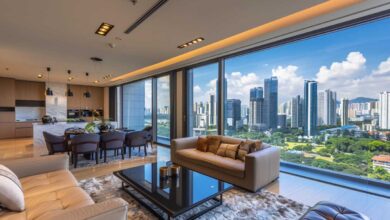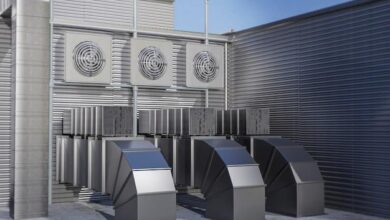5 Renovation Tips for Healthy Homes

There is a lot you can do to create the perfect living environment for you and your family. Whether you are remodeling a single room or fully revamping your entire property, investing in a remodeling project may be costly. So you want to be sure you receive the finest outcomes possible. Find out more about new home builds by visiting Carlisle Homes.
Make your house more comfortable, useful, and appealing by designing it with your family’s health and happiness in mind. You may alter your space to give the best living conditions for you and your loved ones with only a few simple modifications.
Let’s look at some remodeling ideas that you may apply to create a better, healthier house for you and your family.
What Is a Healthy Home?
Most of us spend at least half of our lives in our houses without recognizing that our house has an impact on our health. The basis of a healthy lifestyle is a healthy house. It is tremendously helpful to your physical health and general well-being to live in a clean environment.
A healthy house is a house that has been planned, built, maintained, and repaired in a way that promotes its occupants’ health. Healthy housing is essential for everyone, whether they own or rent their home.
Things to Consider Before Renovating
Every effective refurbishment begins with a well-thought-out strategy.
- Understand your financial situation.
- Make a priority list for renovations.
- Make a schedule for yourself.
- Think about how comfortable you’ll be in your house during the makeover.
Renovating Tips for a Healthy Home
-
Use Wide Windows to Allow Natural Light and Improve Airflow
Increasing the amount of natural light in your house can aid in the creation of a more balanced circadian rhythm. This influences our behavior, mood, and hormone levels.
Increased ventilation is also possible through windows and open-air skylights. This reduces the trapped humidity that creates mold and mildew growth. Big windows that let in light are also ideal in bathrooms as you can save electricity during the daytime. Another alternative is to place the tub near a window, which allows you to relax in the tub while enjoying the sunshine.
In a healthy home, the goal is to keep the air quality as clean as possible by reducing the amount of volatile organic compounds (VOCs). It is important to deal with and prevent damp, condensation, and mold concerns. It is also important to take care to eradicate any potential allergies.
-
Choose and Use Toxin-Free Materials
It’s critical to select materials carefully for everything from furniture to floors, fittings, and countertops. Use as many eco-friendly, organic products as possible in your restoration project. It can assist to protect your family from dangerous chemicals and toxins. You should also inspect the paints, stains, and other goods you use in your remodeling to be sure they don’t contain any toxic chemicals that might endanger your family’s health.
If you’re starting from scratch, you have the option of going all-in and designing a home that prioritizes wellness. It is advisable to ensure that all materials are tested for harmful substances and use certified organic materials.
When it comes to your bathroom, copper tubs are excellent for bathtubs. They are made with copper, a sturdy yet flexible metal that can be molded without splitting, as the name indicates. These tubs are rust-resistant, mold-resistant, antibacterial, and environmentally friendly.
-
Have Indoor Plants
There are obvious ways to improve that connection, such as increasing the amount of glazing to allow views of nature in your garden. Also, surrounding the landscape or incorporating a living wall or green roof into your design. There are some ideas for creating a connection to nature in your home’s finishes that may sound fluffy but have scientific merit.
Ecological valence theory, for example, proposes that natural colors used in the home have a subconscious link to positive experiences. Fractal fluency investigates how repeating patterns, as replicated from nature, can be soothing and relaxing to look at because our brains are hardwired to process them quickly.
-
Install Radon Devices to Check Radon Levels
Radon is a naturally occurring radioactive gas that has no visual color, odor, or taste. Radon levels in confined places can reach dangerously high levels if not treated soon. Radon gas exposure can have serious health consequences. In nonsmokers, it is the major cause of lung cancer.
You may test the radon levels in your house and install radon-detecting devices to help mitigate the problem with radon gas. The radon-detecting devices are the simplest to install and connect directly to your heat recovery ventilator system (HRV). It is a less invasive alternative to building design.
The device only turns on when it’s needed, to emphasize energy savings and indoor air quality. If high radon levels are detected, the gadget will activate an air exchange in your house, removing radon-infused air and replacing it with fresh, clean, treated air.
-
Use Noise Reduction Materials
Noise pollution is described as repeated exposure to excessive sound levels that may cause harm to people or other living beings.
Noise reduction is simply one aspect of optimizing your bedroom as a sleep environment, which is important for both physical and mental health. Other factors that promote better sleep, such as light and temperature, should be considered while designing your bedroom.
Consider using acoustic tiles on the walls to absorb sound. Install noise-canceling doors. Most doors, particularly in apartments and buildings handed over by builders, are composed of hollow-core panels. It is advisable to replace them with solid-core doors made of thick wood.
Use perforated panels buried behind your fake ceiling to reduce sound leakage from the above-mentioned flat. The sound waves are absorbed and limited by these sheets. Install acoustic quilts or soundproof window inserts.
Conclusion
When you understand what’s at risk, the value of constructing a healthy house that’s also useful and attractive becomes evident. A healthy house prioritizes the physical and emotional wellness of individuals who live there. You can follow the five tips discussed in this article to renovate your house.




